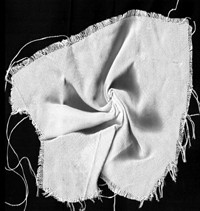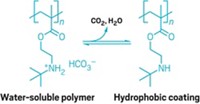Advertisement
Grab your lab coat. Let's get started
Welcome!
Welcome!
Create an account below to get 6 C&EN articles per month, receive newsletters and more - all free.
It seems this is your first time logging in online. Please enter the following information to continue.
As an ACS member you automatically get access to this site. All we need is few more details to create your reading experience.
Not you? Sign in with a different account.
Not you? Sign in with a different account.
ERROR 1
ERROR 1
ERROR 2
ERROR 2
ERROR 2
ERROR 2
ERROR 2
Password and Confirm password must match.
If you have an ACS member number, please enter it here so we can link this account to your membership. (optional)
ERROR 2
ACS values your privacy. By submitting your information, you are gaining access to C&EN and subscribing to our weekly newsletter. We use the information you provide to make your reading experience better, and we will never sell your data to third party members.
ACS Meeting News
Slippery fabric finish cuts microplastic pollution
Washable, low-friction coating prevents nylon and polyester textiles from releasing microfibers
by Prachi Patel
August 18, 2024

Synthetic fabrics made of nylon and polyester are modern essentials. They are also a major cause of microplastic pollution in oceans. Around 500,000 metric tons of microfibers released from synthetic clothes during laundry ends up in the oceans every year, according to a 2022 study. But new fabric finishes that reduce friction could thwart the formation and release of these microfibers.
The finishes are versatile enough to be water wicking or water repellent, depending on the properties needed for performance wear. The coated textiles remain as comfortable as traditional fabrics and can be washed.
When fabrics are washed or worn, individual fibers rub against one another, and this friction causes the fibers to break and release tiny pieces less than 500 µm in length. Some large synthetic apparel companies are trying to address this problem, largely by focusing on consumer laundry habits or promoting washing machine filters that prevent microfibers from going into sewage systems.
“We want to stop creating microfibers in the first place,” said Kevin Golovin, a mechanical and industrial engineering professor at the University of Toronto. He and his colleagues are doing that by preventing the abrasive friction between fibers.
The researchers have designed a two-layer coating for polyester and nylon fabrics, which account for over 90% of all synthetic apparel, according to Golovin. The coating is composed of polymer chains that stick straight out from the surface of the fabric like microscopic bristles; one end is bonded to the surface with a layer of fabric adhesion molecules.
The adhesive molecules depend on the type of fabric. For nylon, the researchers use a trimethoxysilane that ionically bonds with the amide groups in the material. For polyester, they use 3-aminopropyltriethoxysilane that covalently bonds with the fiber.
The polymer bristles, meanwhile, have almost liquid-like flexibility and bestow the fabrics with a low-friction surface. The team picked one of three polymers to make the brushes, depending on the apparel’s desired properties. The researchers chose polydimethylsiloxane for water repellence, perfluoropolyether for oil and water repellence, and polyethylene glycol for water wicking.
To test the finishes, they washed uncoated and coated fabrics for 5 cycles of 1 h each at 40 °C, which is a typical warm wash cycle in a home washing machine. The finishes reduced the release of microplastic fibers by 84–96%, depending on the finish and textile structure.
“This performance seems pretty convincing and compelling,” said Rachel McQueen, who conducts textile research at the University of Alberta. The team would have to ensure the coating lasts for much more than 5 washes, she says. Nonetheless, instead of efforts that focus on consumer practices, she says, “the fact that this solution is coming from an industry perspective of improving and creating low-microfiber-shedding garments is really important.”
Susanne Brander, an ecotoxicologist at Oregon State University, said that while this approach will be helpful for reducing microfibers, the use of potentially toxic trimethoxysilane and perfluoropolyether, a type of PFAS, is a slight concern. “If the finish is cost effective and nontoxic, this would be a great way to reduce microfibers and would be a step in the right direction.”
Golovin presented his team’s work on the new fabric finishes at the ACS Fall 2024 meeting in Denver in the Division of Colloid and Surface Chemistry. The work was published in the journal Small (2024, DOI: 10.1002/smll.202400580).
His team is now developing similar coatings for blended fabrics, which present a bigger challenge, he says. The researchers hope to commercialize the coatings with the help of a grant from the Canadian government. As a first step, they are in talks with a few textile mills and synthetic clothing brands to formulate the most effective and environmentally friendly finishes.





Join the conversation
Contact the reporter
Submit a Letter to the Editor for publication
Engage with us on Twitter